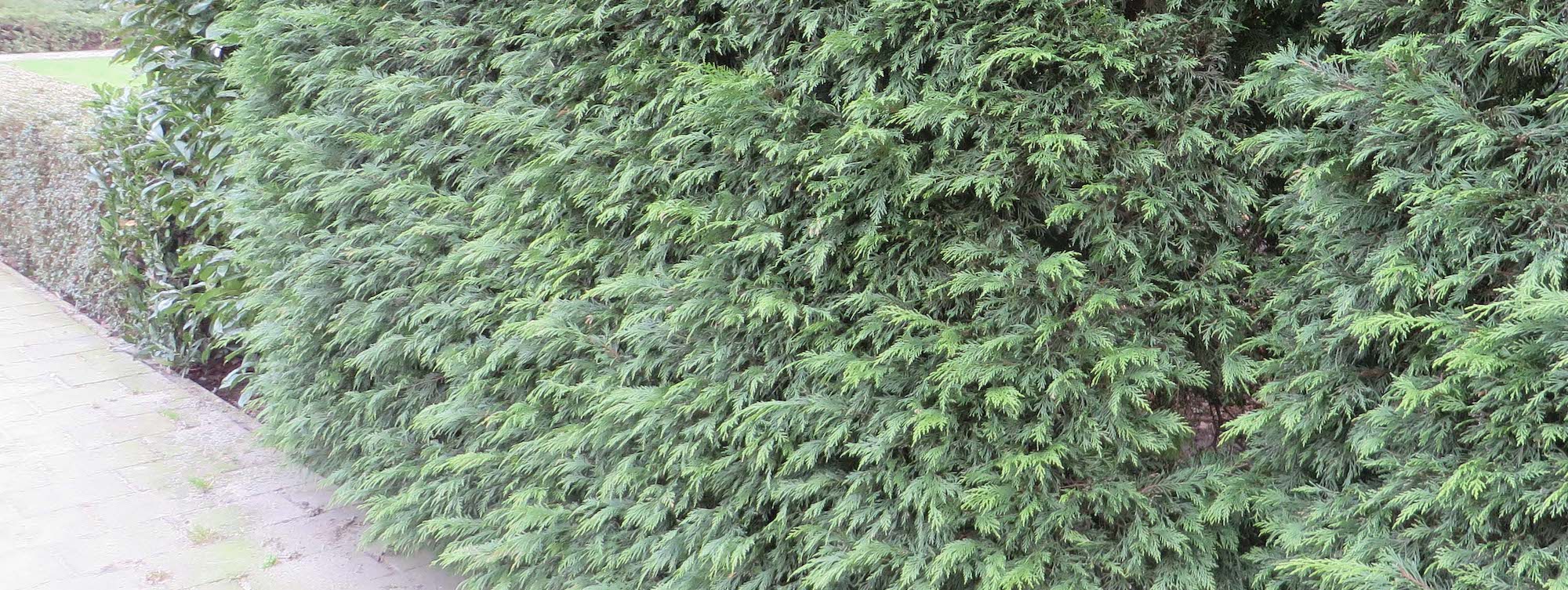
10 conifers for hedges to define spaces with style in the garden
Perfect species and varieties for a successful conifer hedge
Contents
Mark out spaces, protect privacy, avoid attracting prying eyes and decorate the garden: each hedge often fulfils several roles at once. So when planting a hedge, it is important to make the right choices in terms of growth rate, density and height and spread. Discover our selection of 10 hedge conifers perfect to help you enjoy your garden more.
Fastigiate common yew — great longevity
While many yew varieties exist, Taxus baccata ‘Fastigiata Robusta’ is both harmonious and dense, making it an ideal choice for a garden hedge. This variety is much admired for its bright green evergreen foliage and longevity: it can persist for several centuries.
When choosing common fastigiate yew for a conifer hedge, bear in mind that its growth is relatively slow. However, gardeners’ patience is richly rewarded, because after 10 years a plant reaches approximately 1.5 m in height and 30 cm in width.
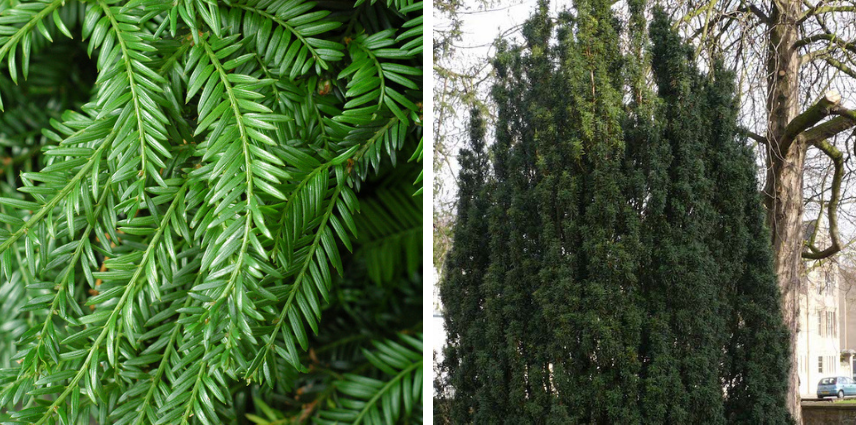
Yew is generally preferred to cypress for a hedge because, even though it grows more slowly, it requires less pruning while offering better resistance to disease. For planting, ensure a planting density of one per square metre.
→ Also discover our complete fact sheet on Yew
Leyland cypress tolerates wind well.
Its attractive, lush green foliage makes it a species ideal for screening your garden and enjoying complete privacy: Leyland cypress ‘2001’ (Cupressocyparis leylandii ‘2001’) is an excellent choice for quickly establishing a dense, evergreen screening hedge. It grows very quickly, by about 60 cm per year.
Quite similar in appearance to Thuja, this hybrid between Lawson cypress and Nootka false cypress is able to anchor deeply in the soil. Thus, it stands up particularly well to wind. This characteristic makes it a preferred choice in northern France, including coastal areas.
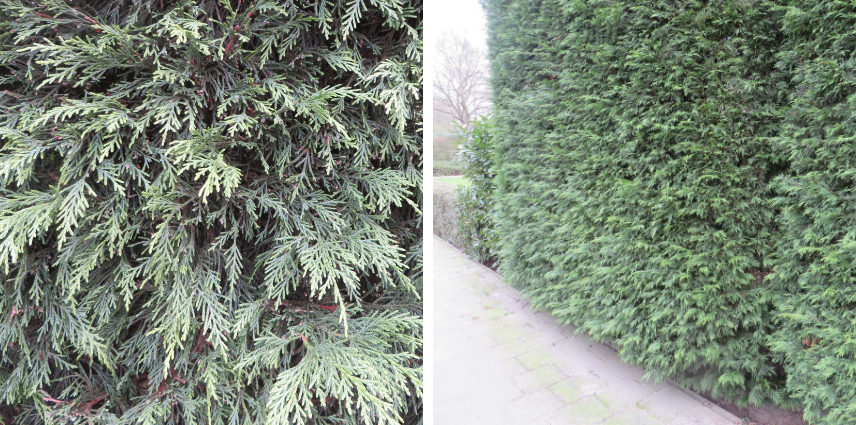
Planting density for this Leyland cypress is one specimen per square metre. Pruning should be occasional, only around April and September, because if repeated too often diseases can spread (although this species remains relatively robust).
Discover other Hedge Conifers
View all →Available in 4 sizes
Available in 1 sizes
Available in 1 sizes
Available in 1 sizes
Available in 1 sizes
Available in 1 sizes
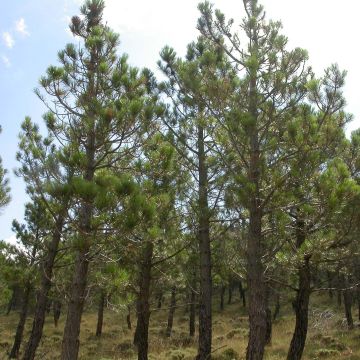
Available in 3 sizes
Available in 2 sizes
Available in 1 sizes
Available in 3 sizes
Japanese hinoki false cypress, a beautiful vivid, luminous colour
Over time, Golden Japanese Hinoki false cypress (Chamaecyparis obtusa ‘Aurea’) eventually develops increasingly pale evergreen foliage. When young, it displays beautiful shades of golden yellow before settling into an extremely luminous green.
This slow-growing variety can be planted as a solitary specimen but can also be used as a hedge to define spaces. Throughout the year, the colours of this specimen change, much to the delight of those who cultivate it: golden yellow, then light green and even coppery come autumn.
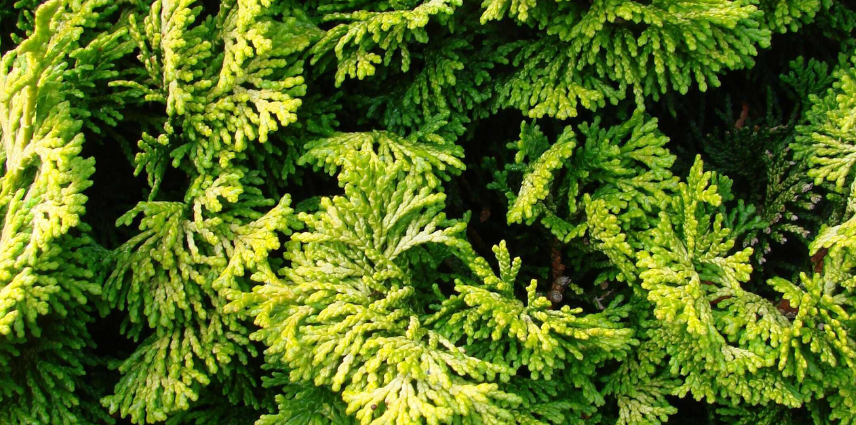
Photo: Mark Bolin / Flickr
It is important to note that this conifer is sensitive to drought: if it hasn’t rained for some time, water it. Regarding planting, we recommend a density of one per square metre, favouring clay-loam or stony soils, ideally moist. Note: it is best to site this false cypress sheltered from wind.
Canadian Thuja 'Brabant', versatile and single to grow
Thuja hedges are probably among the most popular solutions, and for good reason: this species grows rapidly while being generally hardy and undemanding in terms of maintenance. Thuja occidentalis ‘Brabant’ was awarded an Award of Garden Merit in 1984 by the Royal Horticultural Society.
This variety adapts well to most situations and allows creation of evergreen, dense and particularly bright windbreak hedges thanks to its attractive light‑green foliage. Finally, when foliage is crushed, it releases a pleasant fragrance.
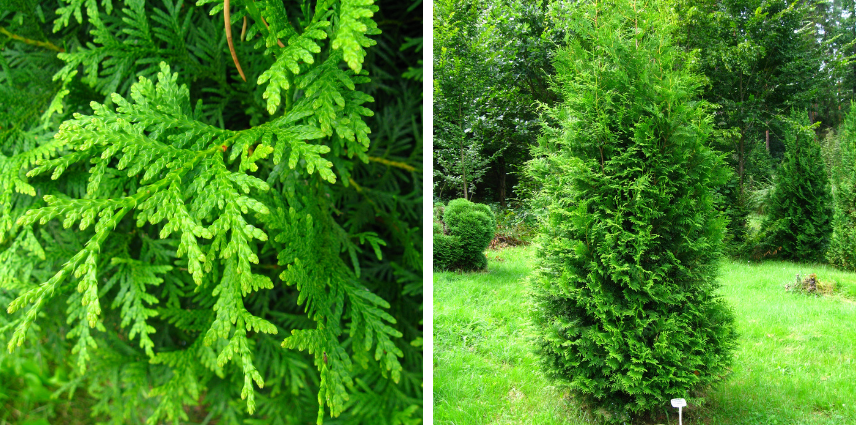
To plant a Thuja hedge, aim for a density of one per square metre, bearing in mind soil should not be too heavy; and it is important to water generously during the first years. Fully tolerant of pruning, this variety withstands temperatures down to -25°C.
→ Learn more about the Thuja in our complete guide
Florence cypress, timeless elegance
Its attractive columnar shape makes it a species suited to creating a handsome conifer hedge with Mediterranean accents: the Florence cypress (Cupressus sempervirens stricta ‘Totem’) grows very quickly during its early years, before slowing down (with a spread always less than 1 metre). With majestic dark green evergreen foliage, it is highly resistant to winds, including the strongest.
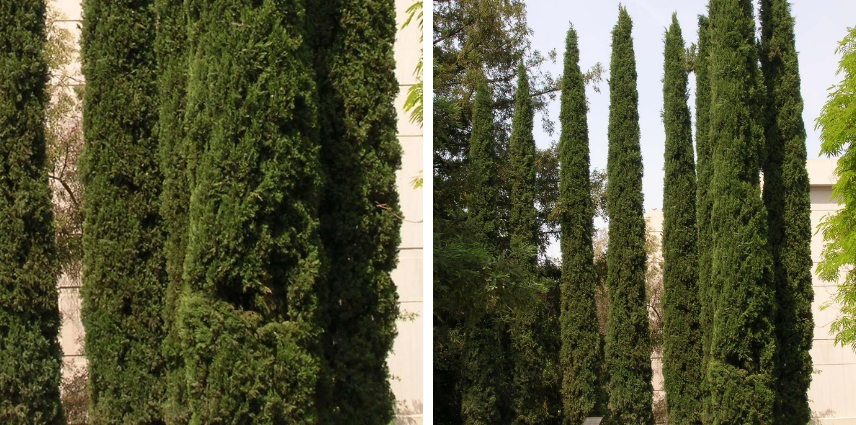
Long ago in Provence, Florence cypresses were planted in groups of three as a sign of welcome to visitors, to indicate that accommodation could be found inside the house. This variety has the advantage of producing no fruit, which makes it lighter and more slender than other specimens in similar categories.
Planting should be at a rate of one plant per square metre, in well‑drained, stony, poor soils. Warning: as it is a Mediterranean plant, this species is sensitive to waterlogged soils in winter and, conversely, copes perfectly with drought. However, it readily endures weather hazards common in southern France, such as the violent winds known as the mistral and the tramontane.
→ Find out more about Cypresses with our comprehensive guide.
Yew 'Densiformis', an interesting alternative to boxwood
Compared with other yews, Taxus media ‘Densiformis’ stands out by growing relatively fast, reaching 1 m in height with a 1.8 m spread. Perfect for defining spaces, this variety allows creation of attractive low evergreen hedges as a replacement for boxwood. It adapts well to different soils and climates from north to south of France and tolerates shade well, even benefiting from it in regions where drought is common.
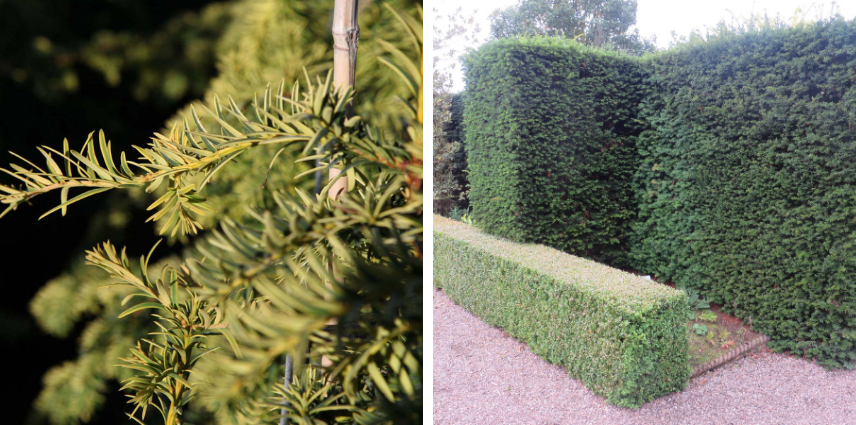
Undemanding, we nevertheless recommend watering abundantly at planting to ensure good establishment, then monitoring watering during the first two or three years, especially in already rather dry regions. Not very prone to disease and parasitic pests, it stands up well to wind and tolerates pruning well; generally two annual prunings are necessary: in spring and autumn.
Ensure a planting density of one per square metre, taking care to loosen soil deeply in a hole wider than the root ball.
Lambert's cypress, prized for its rapid growth
Lambert cypress (Cupressus macrocarpa) is particularly renowned as a conifer for hedging, notably because it is one of the largest in its category. Originating from the Californian coast, it can reach up to 36 metres in height; although in cultivation here it generally does not exceed 12 metres in height with a 10-metre spread after 10 years. It thrives particularly well in an oceanic climate, mild and humid.
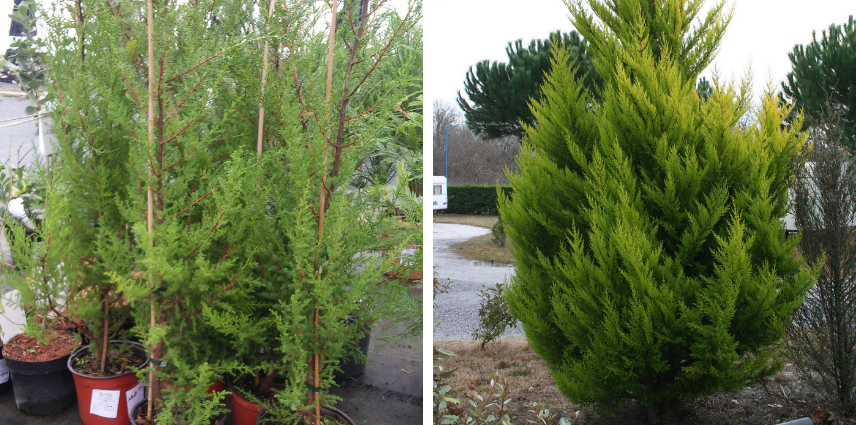
Characterised by its evergreen, soft and beautiful deep green foliage, this conifer prefers poor, sandy soils as well as salt-laden mists. It withstands wind and cold temperatures down to around −15 °C. For a hedge, maintain a density of one per square metre.
Isolated trees with sufficient space to develop quickly adopt a striking silhouette. Pruning is not essential and is even discouraged. Indeed, pruning cuts should not be too drastic or repeated as they cause wounds and render it relatively susceptible to a pathogenous fungus known as cortical canker.
Cypress 'Filifera' and its artistic nonchalance
The nonchalance of Sawara Cypress (Chamaecyparis pisifera ‘Filifera’) makes it an original and unconventional choice for a beautiful conifer hedge in the garden. This very hardy Japanese species is often used for its rot-resistant wood in furniture making.
Known for rather slow growth, it sports pretty bright green evergreen foliage, but above all an irregular, slightly trailing habit that gives it its charm. This perfectly unique silhouette allows gardeners to be less reliant on pruning, a considerable advantage. Moreover, this variety is available in a dwarf form, making it perfectly suited to creating small hedges!
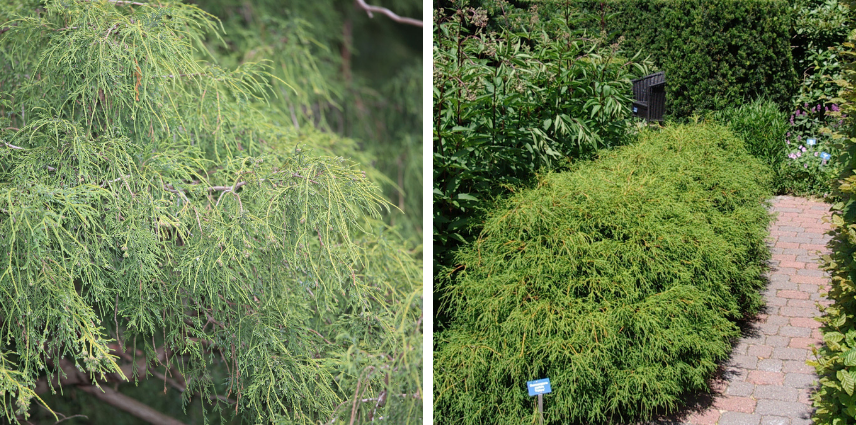
Planted at a density of one per square metre, Cypress ‘Filifera’ is best placed in a sunny or partly shaded spot, in fresh, light soil. Some shoots can be pruned from time to time for a hedge, but take care not to cut into old wood, as no new shoots will appear afterwards.
Japanese cedar 'Vilmoriniana', ideal for small gardens
Dwarf Japanese cedar (Cryptomeria japonica ‘Vilmoriniana’) forms a pretty light-green evergreen globe. It is one of the best dwarf varieties. With a reduced pruning (60 cm in every direction after 10 years) and very slow growth, it becomes an essential ally for defining spaces within a small garden.
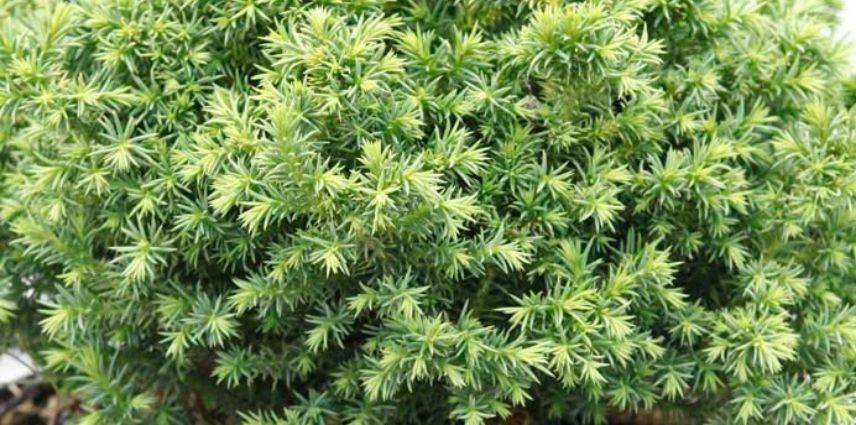
To form a hedge, allow 1 m between each plant. Plant it in ordinary, slightly calcareous, fertile, well-drained and cool soil. Fairly hardy, this conifer withstands both wind and cold temperatures down to -15°C. Finally, it is not obligatory to prune a Japanese cedar, but pruning remains possible when aiming to give it a particular shape, notably for a regular conifer hedge.
Cupressocyparis 'Castlewellan Gold' for an evergreen hedge
To create a bright, excellent screening hedge that establishes quickly, we recommend particularly Cupressocyparis leylandii ‘Castlewellan Gold’. It is a variety of Leyland cypress notable for its golden-green foliage.
Space each young plant 1 m apart, or more if planting already large specimens. On average, this evergreen conifer grows 80 cm to 1 metre each year, which means biannual pruning is needed to maintain conventional hedge height.
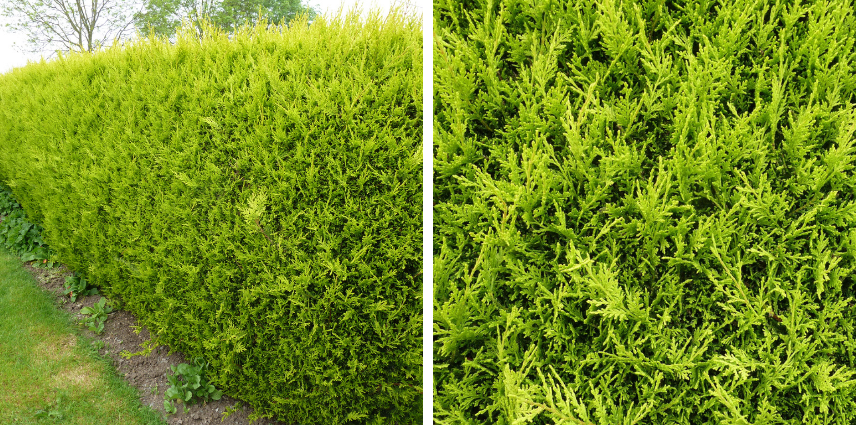
This perfect privacy screen should be planted in full sun, in ordinary, deep soil that does not dry out in summer. During the first years, if young plants are exposed to wind, do not hesitate to stake them until well rooted.
- Subscribe!
- Contents
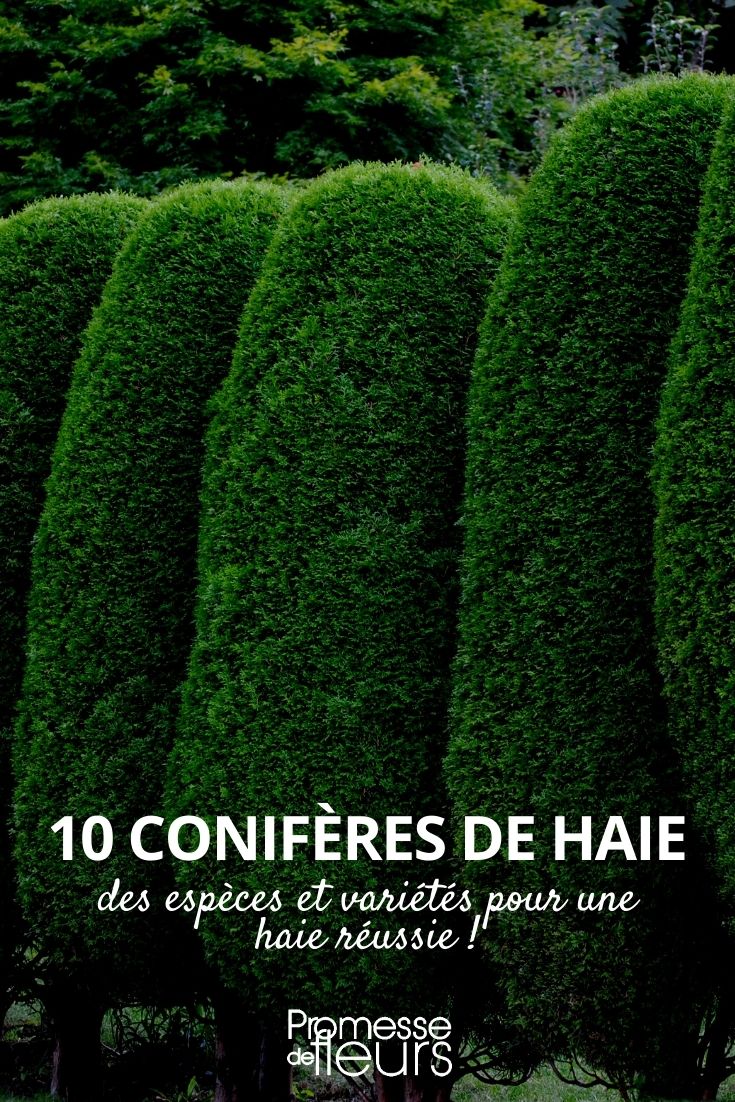































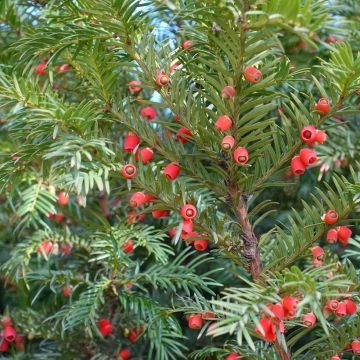
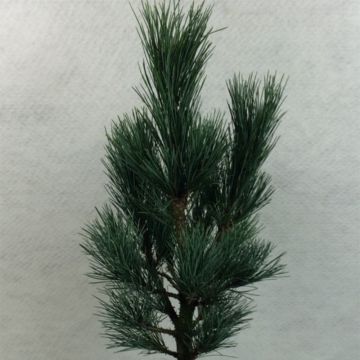
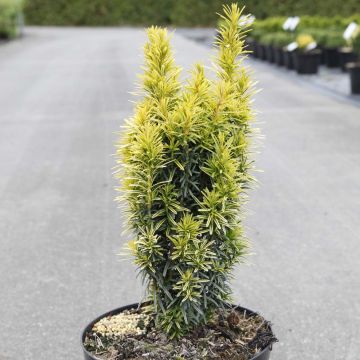

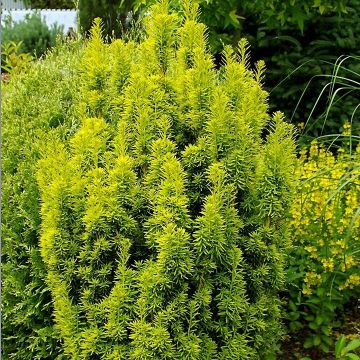
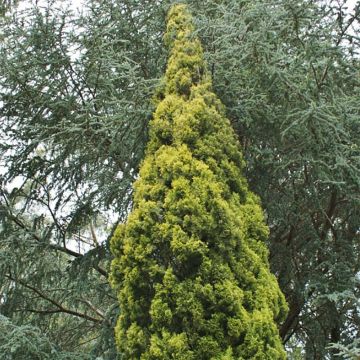

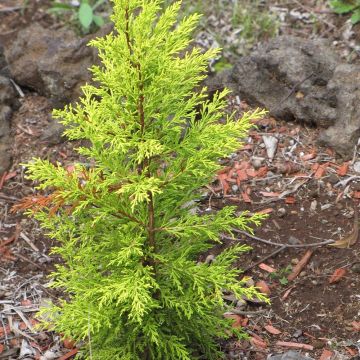
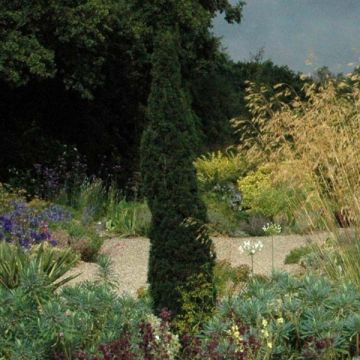
Comments